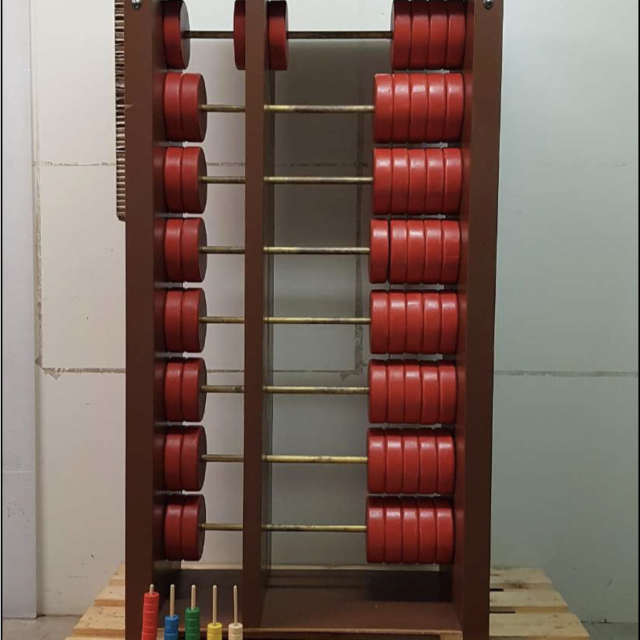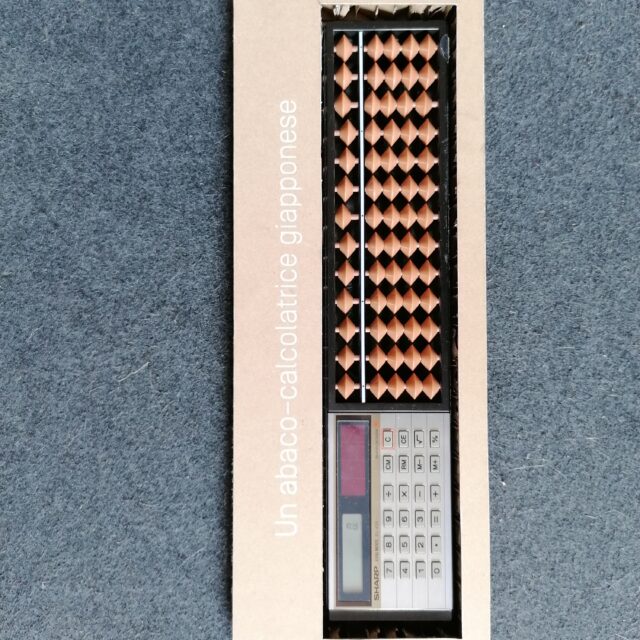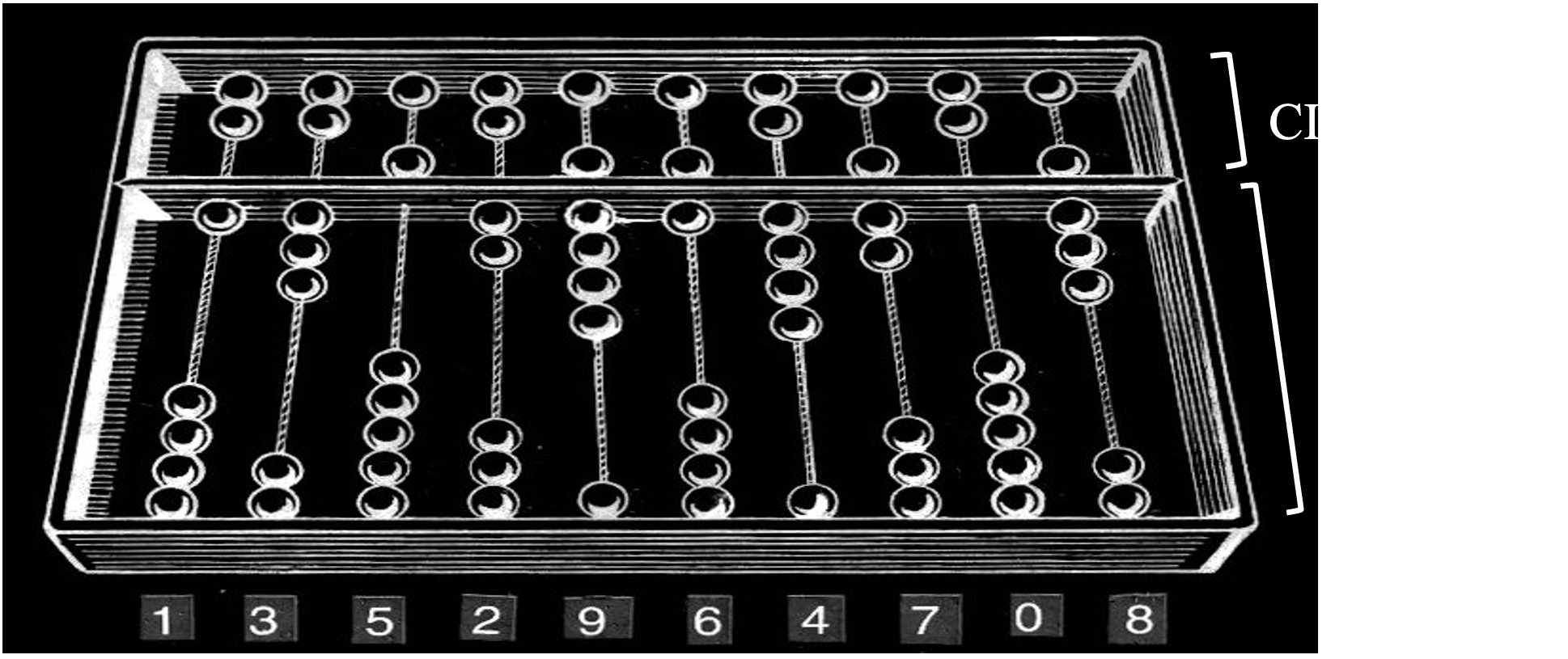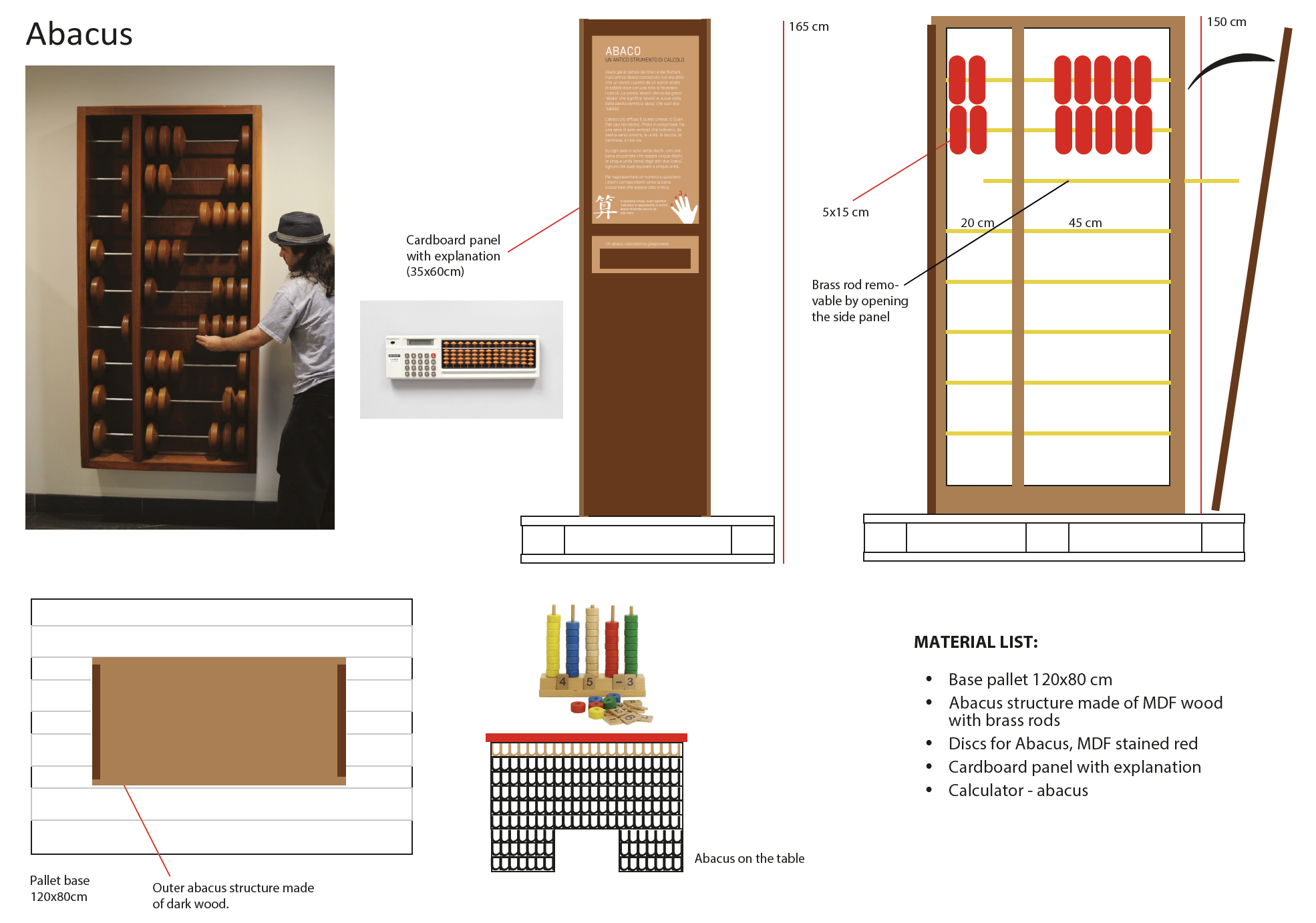The word abacus comes from the Greek word abaks meaning table, which in turn comes from the Semitic word abaq meaning sand. Used as early as the time of the Greeks and Romans, the earliest abacus consisted of a table covered with a thin layer of sand where calculations were made with a stylus. The Chinese-type abacus consists of a series of rods that, from right to left, indicate the different orders of value: on the first rod the units, on the second the tens, on the third the hundreds, on the fourth the thousands, etc. Each rod contains seven balls and a bar that divides five of them-in the part called earth-from two others-in the part called sky. The value of each ball in “sky” corresponds to five times those in “earth.” There is also a six-ball model (Japanese abacus), which is more complicated in use, with 5 balls for “earth” and 1 for “sky.”


How to play
To learn how to represent number and do operations with the abacus we recommend these videos:

The abacus is the oldest tool invented by man for solving calculations and is still used in Chinese schools for teaching today. To represent a number one moves the balls toward the horizontal rod, remembering that the balls at the top are worth five times those at the bottom of the same rod. In the figure above the number is 1’352’964’708.
An important shortcoming of the abacus is that it does not allow past operations to be fixed, so if a mistake is made, everything has to be repeated from the beginning. Japanese companies got around this problem by having three abacists perform the same calculation at the same time: if the three solutions were identical, then the solution was correct.
Curiosity: In ancient China, abacuses with bamboo sticks were used, later tables prevailed on which division lines and columns were marked to indicate the different orders of units in the number system in use. Tokens representing the numbers were then placed on these lines so that any kind of calculation could be carried out.
How to build
EXHIBIT MATERIAL:
- Base pallet 120×80 cm with wheels
- Abacus structure // made of MDF wood
with brass rods; side panels can be opened for insertion of metal rods - Discs for Abacus // MDF stained red
- Cardboard panel 35×60 cm with explanatio
- Calculator – abacus
CLICK AND DOWNLOAD PRINT-READY .PDF FILES:
CARBOARD PANEL 35×60 cm (ITA)
CARDBOARD PANEL 35×60 cm (FRA)
CARDBOARD PANEL 35×60 cm (DE)
